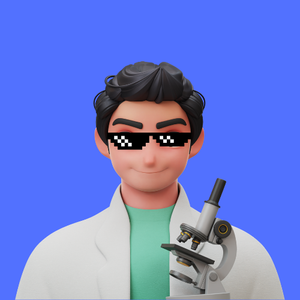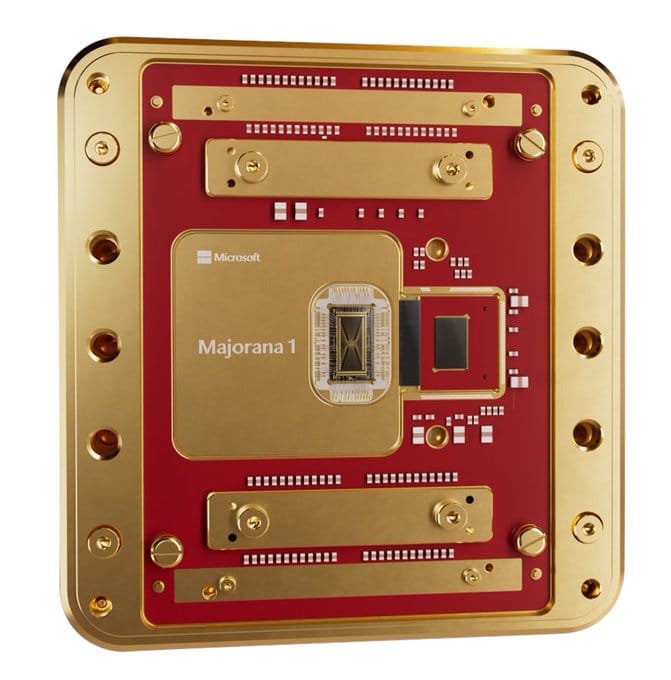Introduction to Microsoft's Quantum Breakthrough
Microsoft has unveiled a significant advancement in quantum computing with the Majorana 1 chip, powered by topoconductors. Announced by CEO Satya Nadella in an X post on February 19, 2025 (X post details), this breakthrough introduces a new state of matter—topological superconductivity—that could revolutionize computing. Topoconductors, made from indium arsenide and aluminum, host Majorana zero modes, enabling more stable and scalable qubits. This development promises to accelerate the timeline for practical quantum computers, potentially solving complex problems in medicine, materials science, and cryptography within years, not decades.
The Science Behind Topoconductors
Topoconductors are a novel material class that creates a topological superconducting state, neither solid, liquid, nor gas. This state hosts Majorana zero modes, used to build topological qubits, which are inherently error-resistant due to their non-local information storage. Unlike traditional qubits, prone to noise, topological qubits encode information in the system's overall configuration, reducing errors. A Nature paper by Aghaee, M. et al. (Nature paper) demonstrates measuring fermion parity with 1% error, a crucial step for quantum error correction, validated by high-fidelity measurements.
Majorana 1 Chip and Its Potential
The Majorana 1 chip, Microsoft's first quantum processing unit using topoconductors, is designed to scale to a million qubits on a single chip, fitting in your hand. Each qubit is 1/100th of a millimeter, offering faster, more reliable computation. This scalability could address industrial-scale problems, contrasting with current systems limited to hundreds of qubits. Microsoft's long-term vision, detailed in their blog (Microsoft blog), aims for fault-tolerant quantum computers, potentially revolutionizing sectors like healthcare and cybersecurity.
Comprehensive Analysis of Microsoft's Quantum Computing Breakthrough
Microsoft's recent announcement, highlighted by Satya Nadella in an X post on February 19, 2025, marks a significant milestone in quantum computing with the introduction of the Majorana 1 chip and the use of topoconductors. This section provides a detailed examination of the breakthrough, its scientific underpinnings, implications, and the broader context within the quantum computing landscape, including all relevant details from the research process.Background and AnnouncementThe announcement was made through two X posts by Satya Nadella. The first post, detailed the breakthrough, stating, "After a nearly 20 year pursuit, we’ve created an entirely new state of matter, unlocked by a new class of materials, topoconductors, that enable a fundamental leap in computing." It introduced Majorana 1, the first quantum processing unit (QPU) built on a topological core, and emphasized the potential to create meaningful quantum computers in years, not decades, with qubits that are faster, more reliable, and smaller (1/100th of a millimeter), paving the way for million-qubit processors. The second post, provided a link to further details, directing to Microsoft Blog.
Read more about our discovery, and why it matters, here: https://t.co/fzeVX6G95w
— Satya Nadella (@satyanadella) February 19, 2025
Scientific Foundation: Topoconductors and Topological Qubits
Topoconductors represent a breakthrough class of materials, combining indium arsenide and aluminum, engineered atom by atom to create topological superconducting nanowires. These materials enable a new state of matter, termed topological superconductivity, which is neither solid, liquid, nor gas. This state is harnessed to produce Majorana zero modes (MZMs) at the wire ends, used as qubits. Majorana fermions, theorized for decades, are particles that are their own antiparticles, offering stability due to their non-local storage of quantum information, making them less sensitive to noise.
The stability is crucial for quantum error correction, a major challenge in quantum computing. Microsoft's research, detailed in a Nature paper by Aghaee, M. et al., with DOI 10.1038/s41586-024-08445-2, published online in 2024 but cited for 2025, demonstrates high-fidelity measurements of fermion parity, achieving error rates as low as 1%. The paper, "Time-resolved measurement of fermion parity in a topological superconductor," focuses on validating a necessary ingredient for topological quantum computation by examining the quantum capacitance CQ of a quantum dot coupled to the nanowire, allowing single-shot parity determination with single-μeV energy resolution and an assignment error probability of 1% for optimal measurement time. Supplementary information, accessible at /articles/s41586-024-08445-2#MOESM1, discusses device fabrication (Sections 1.2 and 1.3), readout circuit (Section 1.4), and tuning protocols (Sections 2.5 and 4), with measurement parameters like B∥≈1.8T, VWP1≈−1.832V, and achieving a signal-to-noise ratio (SNR) of 5.01 in 90 μs, equivalent to SNR of 1 in 3.6 μs (Section 3.3). The random telegraph signal (RTS) has a characteristic time τRTS≈2ms, with an oscillation period of ΔCQ(Bx) at 1.9 ± 0.1 mT, consistent with flux h/2e.
Majorana 1: Technical Details and Comparison
Majorana 1 is an eight-qubit prototype chip, cooled near absolute zero and tuned with magnetic fields, as noted in DCD Article. It leverages topological qubits, which are smaller and faster than current alternatives, offering a clear path to scaling to million-qubit systems. Compared to competitors like Google's Willow chip, announced in late 2024, and IBM's recent hardware, Majorana 1 focuses on hardware-protected stability, reducing the need for complex error correction, as highlighted in The Guardian.
Implications for Industry and Society
The potential applications are vast. In healthcare, topological qubits could enable real-time analysis of genetic data, accelerating personalized medicine, as suggested in Live Science. In materials science, they could model complex systems for new materials, while in cryptography, they promise unbreakable encryption, addressing growing digital threats, as noted in BBC News. However, scaling to million-qubit systems requires overcoming challenges like extreme cooling and material production, which could delay adoption, as mentioned in insideHPC.
Broader Context in Quantum Computing
This breakthrough aligns with a surge in quantum progress, including Google’s Willow chip and IBM’s advancements in early 2025. Nvidia’s CEO Jensen Huang predicted useful quantum computing in 20 years in January 2025, but Microsoft’s approach suggests a faster timeline, potentially sparking a quantum arms race, as discussed in GeekWire. Microsoft’s 17-year persistence, led by researchers like Chetan Nayak, contrasts with shorter-term strategies, positioning it as a leader, as seen in Microsoft Research.
Challenges and Skepticism
Despite the excitement, experts caution for more data to confirm the breakthrough, given quantum computing’s history of overpromising. Past claims, like a retracted 2018 Nature study on Majorana states, raise reproducibility concerns, as noted in Nature News. Scaling to million-qubit systems requires solving technical hurdles, such as maintaining quantum coherence, and some scientists argue for prioritizing practical applications, as mentioned in Quantum Computing Report.
Microsoft’s Strategic Vision
Satya Nadella framed this as a tool for global productivity, not tech hype, aligning with Microsoft’s focus on societal benefit, as stated in Microsoft Source. The announcement, coinciding with growing global interest driven by climate and health crises, positions Microsoft to influence standards and collaborations, potentially leading the quantum computing ecosystem by the late 2020s.
Detailed Technical Specifications
To organize the key technical aspects, the following table summarizes the specifications of the Majorana 1 chip and related research:
Feature | Description |
|---|---|
Material | Topoconductor (indium arsenide and aluminum) |
Qubit Type | Topological qubits based on Majorana zero modes |
Qubit Size | 1/100th of a millimeter |
Scalability | Designed to scale to a million qubits on a single chip |
Parity Measurement Error | As low as 1% |
Temperature Requirement | Near absolute zero |
Potential Applications | Drug discovery, materials science, cryptography, climate modeling, etc. |
Measurement Technique | Quantum capacitance of quantum dot coupled to nanowire |
Energy Resolution | Single-μeV resolution for measuring state’s energy |
Signal-to-Noise Ratio | Achieved SNR of 5.01 in 90 μs, equivalent to SNR of 1 in 3.6 μs |
Random Telegraph Signal | Characteristic time |
This table encapsulates the core experimental and technical aspects, providing a clear overview for readers.
Conclusion and Q&A
Microsoft’s Majorana 1 and topoconductors represent a pivotal advancement, creating a new state of matter for quantum computing. By leveraging topological qubits, it addresses key challenges, promising faster, scalable systems with significant societal impact. While challenges remain, this breakthrough could redefine the timeline for quantum computing’s practical realization, marking a new era in technology.Q&A Section
- What are topoconductors?
Topoconductors are a new class of materials that combine indium arsenide and aluminum to create a topological superconducting state, hosting Majorana zero modes for stable quantum computing. - How do topological qubits differ from traditional qubits?
Topological qubits are more stable and less error-prone because they encode information in the system's overall configuration, making them less sensitive to environmental noise. - What is the significance of the Majorana 1 chip?
The Majorana 1 chip is the first quantum processor using topoconductors, designed to scale to a million qubits, bringing practical quantum computing closer to reality. - What are the potential real-world applications of this technology?
Applications include drug discovery, materials science, cryptography, climate modeling, and more, promising to solve complex problems that are currently intractable. - What challenges does this technology face?
Challenges include scaling up the technology, maintaining stability at large scales, and managing extreme operational conditions like near-absolute zero temperatures. - How does Microsoft's approach compare to other quantum computing efforts?
Microsoft's focus on topological qubits offers inherent error protection, potentially providing an advantage over other approaches that rely more on software-based error correction. - What is the timeline for practical quantum computers based on this breakthrough?
Microsoft suggests that practical quantum computers could be achieved in years, not decades, thanks to this breakthrough.


